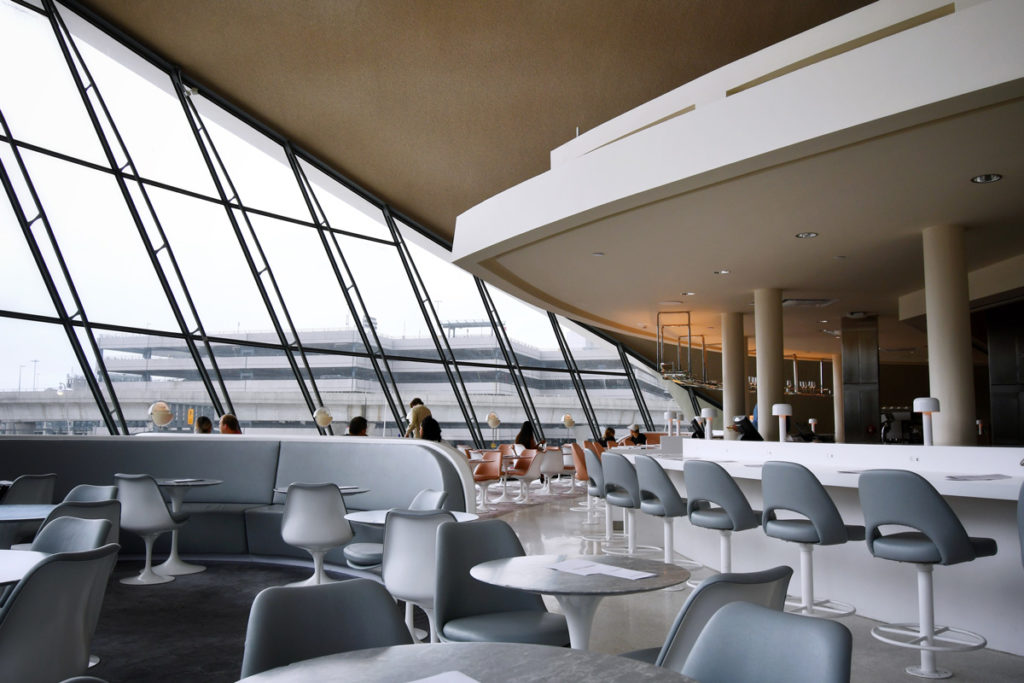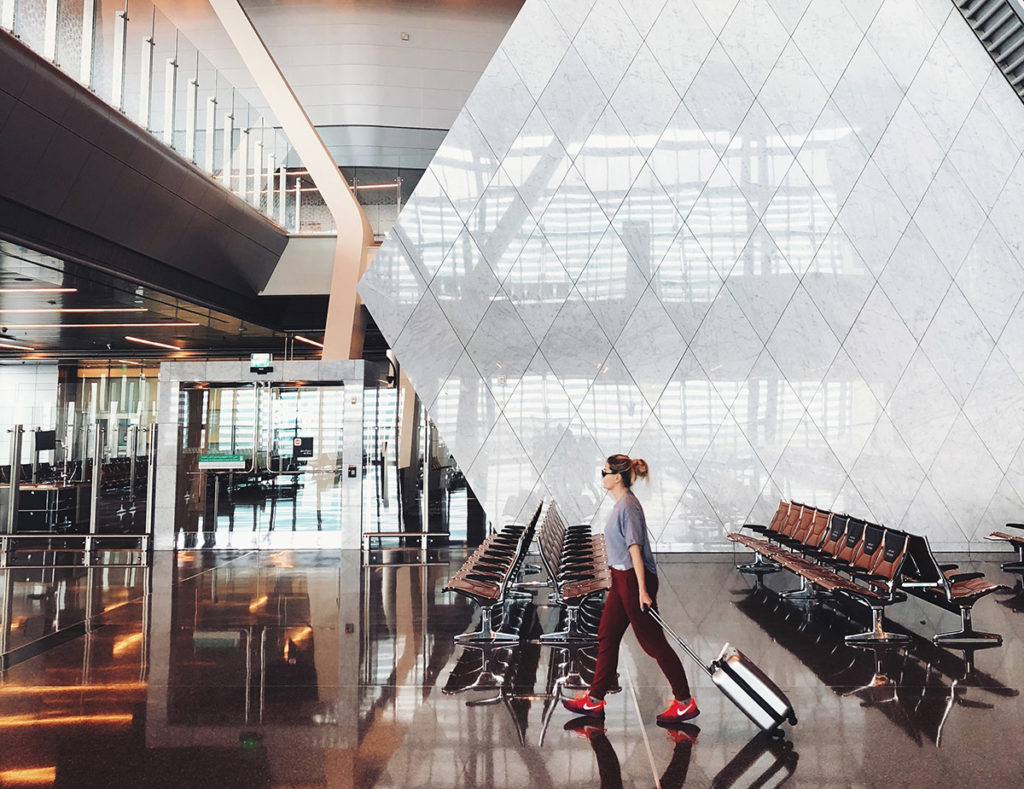After years of travel restrictions, Americans are finally taking the trips they have been dreaming of. Despite news of frequent flight cancellations and other travel headaches, Americans are planning more extensive vacations and splurging on travel, even as recession buzz grows. Regardless of whether American travelers are making up for lost time or just really need a vacation, this spending trend is good news for the Travel Retail industry, which is poised for major growth among retail businesses worldwide.
The global Travel Retail industry, which was valued at more than $55 billion in 2021, is predicted to grow to nearly $175 billion by 2030. This includes duty-free shops typically found at international airports, seaports, border towns, and train stations, as well as several “downtown duty-free” shopping stores popular in Southeast Asia where shoppers can purchase perfume and cosmetics, luxury goods, wine and spirits, electronics, food, tobacco, confectionery products, and more.
Travel is frustrating at times, and brands have an amazing opportunity to deliver a rewarding and unique experience to those who live for travel. But are brands ready to be more than just present?

Travel Retail At A Glance
The world’s first duty-free airport shop opened in Shannon, Ireland in 1951. Every plane that crossed the Atlantic from the U.S. had to stop there to refuel, and local caterer Brendan O’Regan greeted travelers with the option to purchase Irish whiskey and mutton. He argued that his air travel customers should have the same tax advantages as cruise ship shoppers, and the government allowed him to open the first airport retail travel store. Soon after in 1960, Paradies opened its first store in the Atlanta Municipal Airport, ushering in the dawn of American travel retail. Today, most airports contain between 50 and 100 stores, the same number as the average American shopping mall.
Most innovative activations are happening in airports overseas. A pop-up at the Amsterdam airport by men’s shave and care line, Tabac, offers a free shave to passersby, whereas Douwe Egberts at Johannesburg’s O.R. Tambo airport is helping travelers push through their layovers with free cups of coffee for its Bye Bye Red Eye campaign.
The Singapore Changi Airport has revamped its retail options and has added eye-catching pop-ups and and exclusive products and concepts for its Changi 1st campaign. The initiative makes novel and immersive retail experiences first available to travelers at Changi Airport—and it’s paying off. A limited-edition of Yamazaki 55 whiskey recently sold at a pop-up for SGD$760,000 (US$550,000).
Europe and Asia lead the travel retail industry when it comes to luxury brands. Large international hubs, like the Zurich airport, boast a large selection of luxury branded shops, from Bulgari and Rolex to Hermes and Gucci and more. The Istanbul Airport is home to Luxury Square, a store featuring 28 top international luxury brands under one 800-square-meter concept. Brands include Burberry, Marc Jacobs, Dior, Saint Laurent, and much more.
The most innovative luxury beauty activations can be found across Asian airports. In Bangkok, motion sensors and a virtual lip trial app using AR take customers on a journey to explore Nars lip colors. Guerlain used gamification to engage travelers with a WeChat game that can only be played at the Beijing Capital International Airport to win a free tube of lipstick at the duty-free shop.
World-class travel experiences in the U.S. are happening, but not at a competitive pace. Product-focused innovations, like snack and candy products, are dominating domestic travel retail. M&M’s is investing in their digital displays to promote new M&M candy bars and continue building on their international travel retail experiences. Also popping up are beauty vending machines by brands like Benefit and Essie, who are offering a little luxury on the go.
On The Horizon
Travel retail is positioned for growth as burgeoning brands use the channel to get in front of new shoppers. How can brands differentiate themselves in travel retail? Here are some trends and inspirational examples of brands rising to meet the future of this growing industry.

1. Go Big, Spend Big – Expedia is calling 2022 the year of the GOAT, or “greatest of all trips,” after their survey of 12,000 travelers in 12 countries found that 65 percent of respondents are planning to “go big” on their next trip. Bucket-list destinations are trending, and travelers are making up for time lost to the pandemic. Increased traffic in airports means travel retail outlets will see a boost to their bottom line if they deliver a customer experience that resonates. For some brands, it’s time to think outside the box and venture into travel retail. TripAdvisor, the popular online travel research and review site, recently opened several retail stores across U.S. airports. The store is an extension of the brand, offering a place to plan and book the perfect trip, as well as travel staples like books, snacks, and grab-and-go food items.
2. Delightful Experiences – As shoppers’ expectations continue to increase, it’s critical for brands, wherever they are, to keep up to stay relevant. Pop-ups within duty-free stores are bringing a new dimension of education and inspiration through immersive experiences. Travel schedules dictate the number of minutes travelers have to shop, with the average shopping time in an airport around 30 minutes. It’s not a lot of time to earn a shopper’s attention, let alone their dollars, so brands must make a great first impression and meet them on their chosen channels, from mobile apps to social media and with digitized displays in stores.
3. Tech-Enhanced Shopping – Shoppers expect retailers to target them with location-based deals and customized options. Additionally, travel retail outlets offer a great opportunity to use technology like AI and VR to show a range of products and give the shopper a unique experience. Some travel retailers in international airports are trying out robot cashiers to increase speed and efficiency at check-out, leaving human employees to interact personally with shoppers as they browse. Travel retail giant Dufry has equipped more than a dozen U.S. and U.K. third-party locations with Just Walk Out technology, Amazon One, or a combination of the two.
4. Lounge Life – As more travelers search for a relaxing retreat from the all-to-common flight delays and growing crowds, branded airport lounges are seeing a renaissance. Entry is typically granted to those with business class tickets or premium credit cards, but savvy luxury brands will find a way in. We will see high-income travelers differentiating themselves by retreating to exclusive lounges, which will offer personalized experiences tailored to how each customer likes to spend their time while waiting for a flight. Brands that want the eyes of this demographic—don’t miss the bus. A modern lounge experience can be found at Istanbul Airport’s Turkish Airlines International Business Lounge, which features sleep areas, a cinema area, and iMac business stations, as well as a delightful children’s area with a slide that looks like a plane.
Memorable Brand Experiences – Innovative brands belong in travel retail. While no one wants to spend any longer than necessary in the airport, travel retailers aim to make the experience as enjoyable as possible, with unique offerings that people can gift to others or spoil themselves with. Sensory and experiential offerings bring people in and keep them engaged with a unique brand experience. The Bombay Sapphire Glasshouse was created in several international airports. The space immerses travelers in a sensory experience. Upon entering, they hear birds chirping and water running and smell different gin flavors in scented vapor droplets in the air, creating an engaging and relaxing experience. At the Birmingham UK Airport, Cadbury offers travelers an opportunity to pose for a photo with their favorite soccer players.

How can brands capitalize on the massive opportunity the impending growth in travel retail provides? Customer-centered innovation is the key to growth in this area. Luxury brands are uniquely positioned to succeed in airport lounges as well as with high-income travelers heading to their bucket-list safari. All retailers in this space should be focusing on global markets with unique branded experiences and meeting the traveler where they are by using technology to get ahead.





